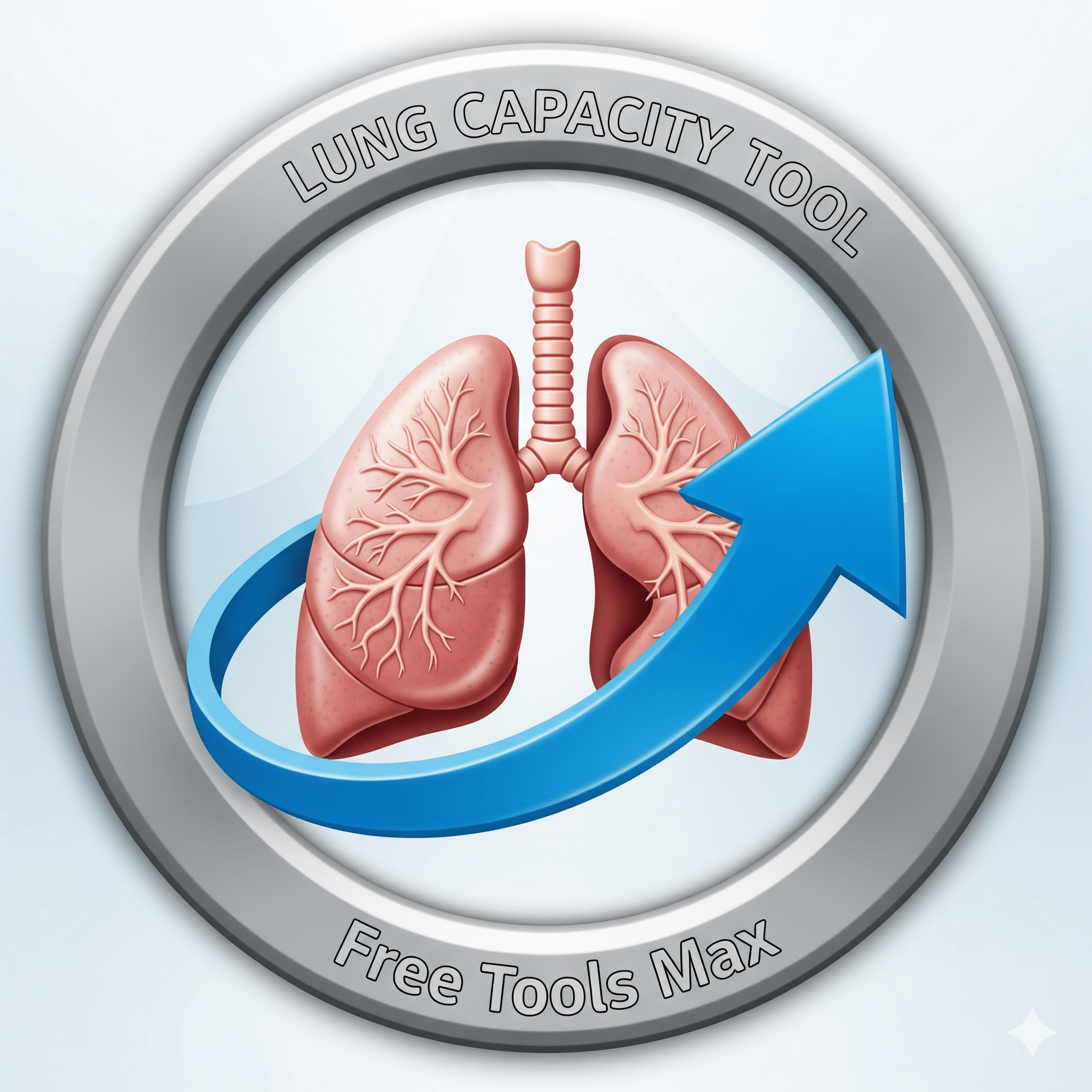 Respiratory & Lung Health
Respiratory & Lung Health
Lung Capacity Calculator
Estimate key lung volumes and capacities based on basic spirometry principles. This educational tool provides calculated approximations for Tidal Volume, Vital Capacity, and more using standard formul as. It is designed for educational purposes to understand respiratory physiology, not for medical diagnosis.
How to Use This Tool
Start by entering basic health information: your Age (18-100 years), Height in centimeters, and Gender (male/female), as these factors significantly influence lung capacity predictions. Select your Smoking Status (never, former, or current smoker) for more accurate assessment, as smoking impacts respiratory function.
For precise results, input actual Lung Measurement values if available from a previous spirometry test. Enter FEV1 (Forced Expiratory Volume in 1 second) and FVC (Forced Vital Capacity) in liters. These optional fields allow comparison between predicted and measured values.
Click "Calculate Lung Capacity" to generate your results. The calculator displays three key metrics: Predicted FVC (total exhale volume), Predicted FEV1 (first-second exhale volume), and the critical FEV1/FVC Ratio percentage used to diagnose obstructive lung conditions.
Review the color-coded Lung Capacity Scale showing where your results fall across four categories: Severe (red), Moderate (yellow), Mild (blue), and Normal (green) lung function. The visual indicator provides instant understanding of your respiratory health status.
Read the detailed Interpretation of your results, which explains what your predicted values mean in practical terms and whether they suggest normal lung function or potential issues.
Learn about Spirometry Basics in the information panel. Understand the difference between FVC (total air volume exhaled) and FEV1 (air exhaled in first second), and why their ratio is crucial for detecting asthma, COPD, and other respiratory conditions.
Explore Breathing Exercises like Diaphragmatic Breathing and Pursed-Lip Breathing that can help improve lung function and capacity. These techniques are beneficial for both healthy individuals and those with respiratory concerns.
Remember this tool provides estimates only. Always consult healthcare professionals for actual medical diagnosis and treatment of respiratory conditions. This calculator serves as an educational resource for understanding lung health and spirometry values.
Practical Use Cases
Key Features
Educational Estimation
Provides calculated estimates for key lung volumes (TV, IRV, ERV, VC, TLC) using standard formulas.
Personalized Inputs
Uses age, height, and sex to personalize the calculations for more relevant estimates.
Clear Definitions
Includes explanations for each lung volume and capacity term for easy learning.
Medical Disclaimer
Features a prominent disclaimer that this is for education only, not medical diagnosis.
Comparative Context
Shows how estimated values compare to average predicted ranges for context.